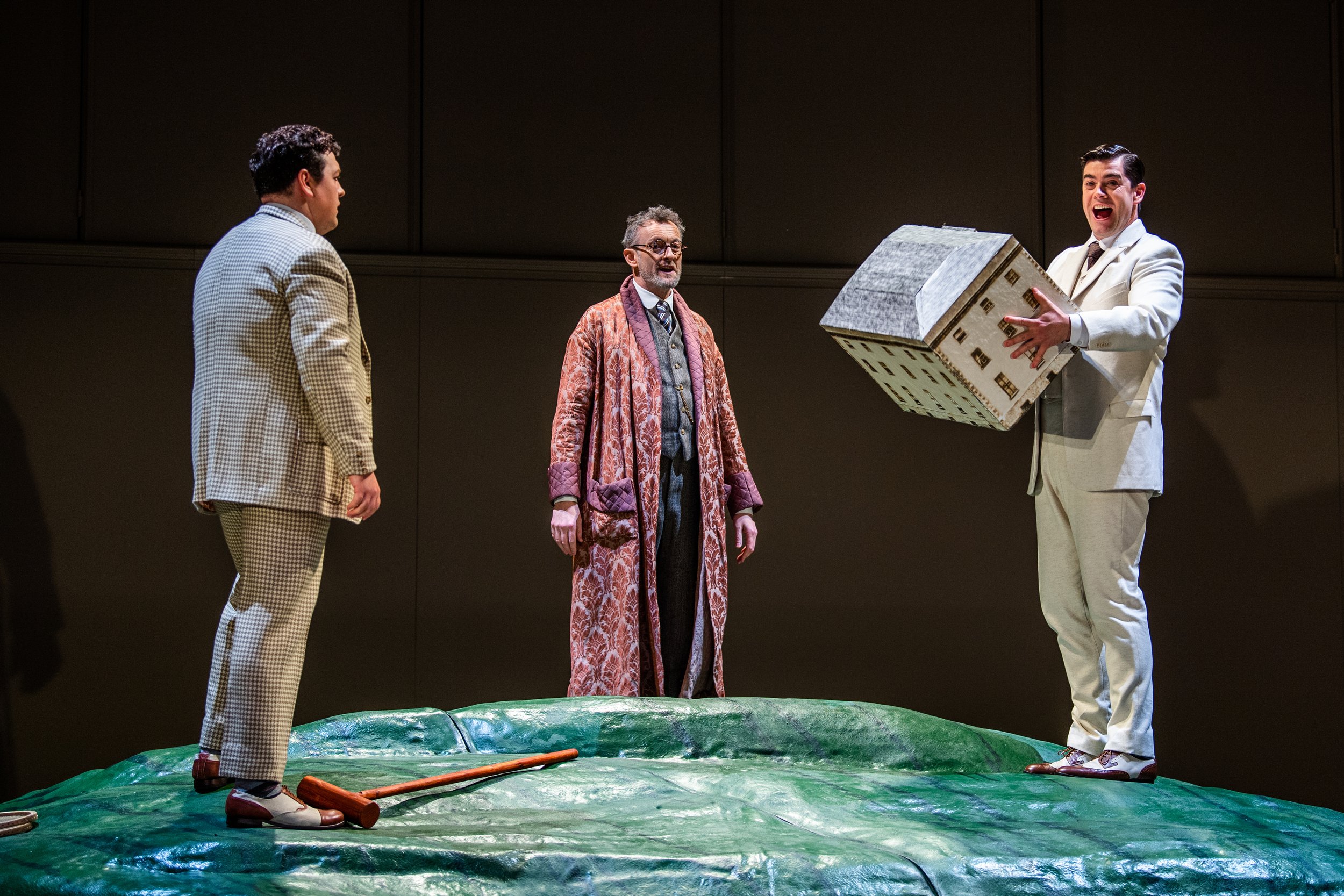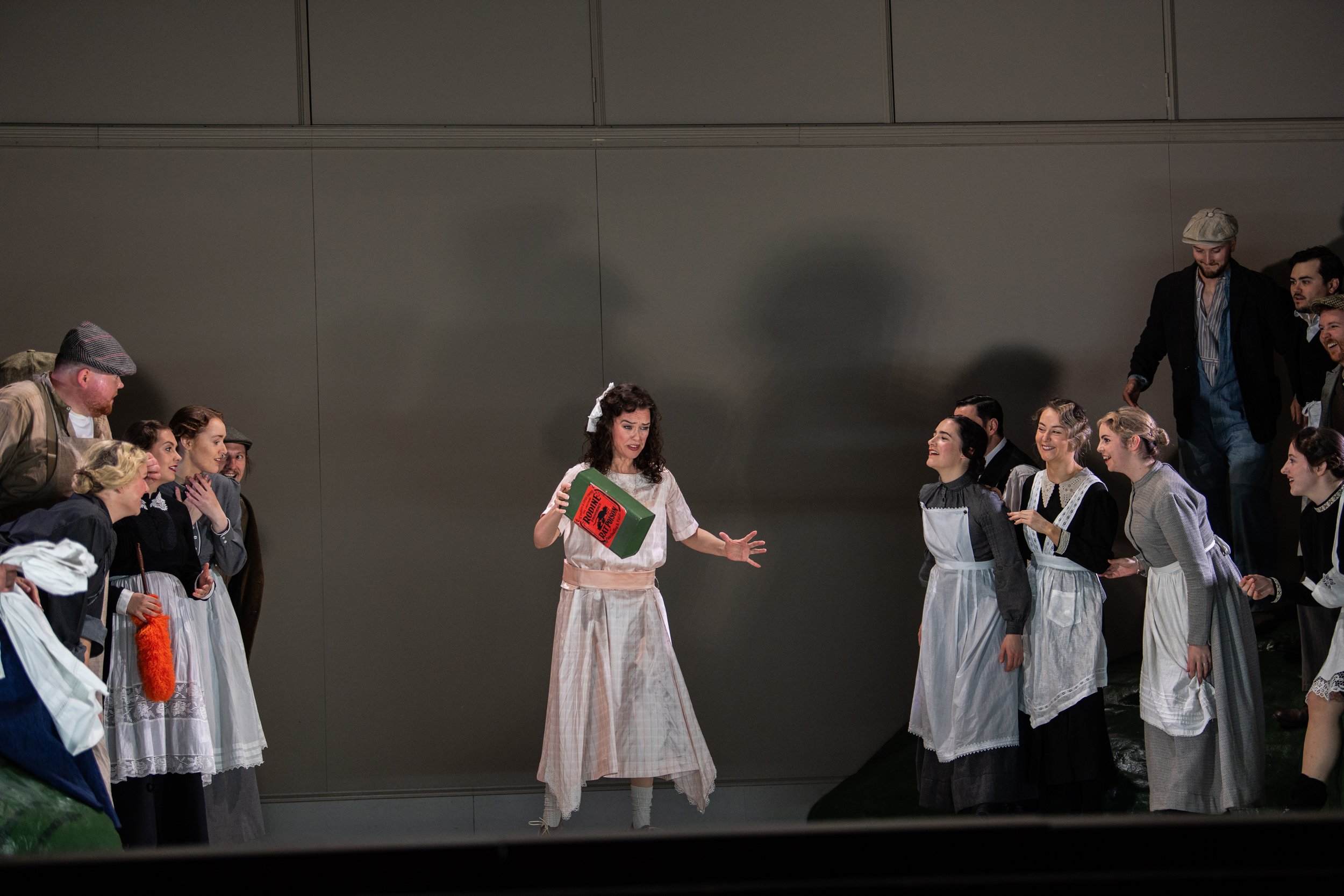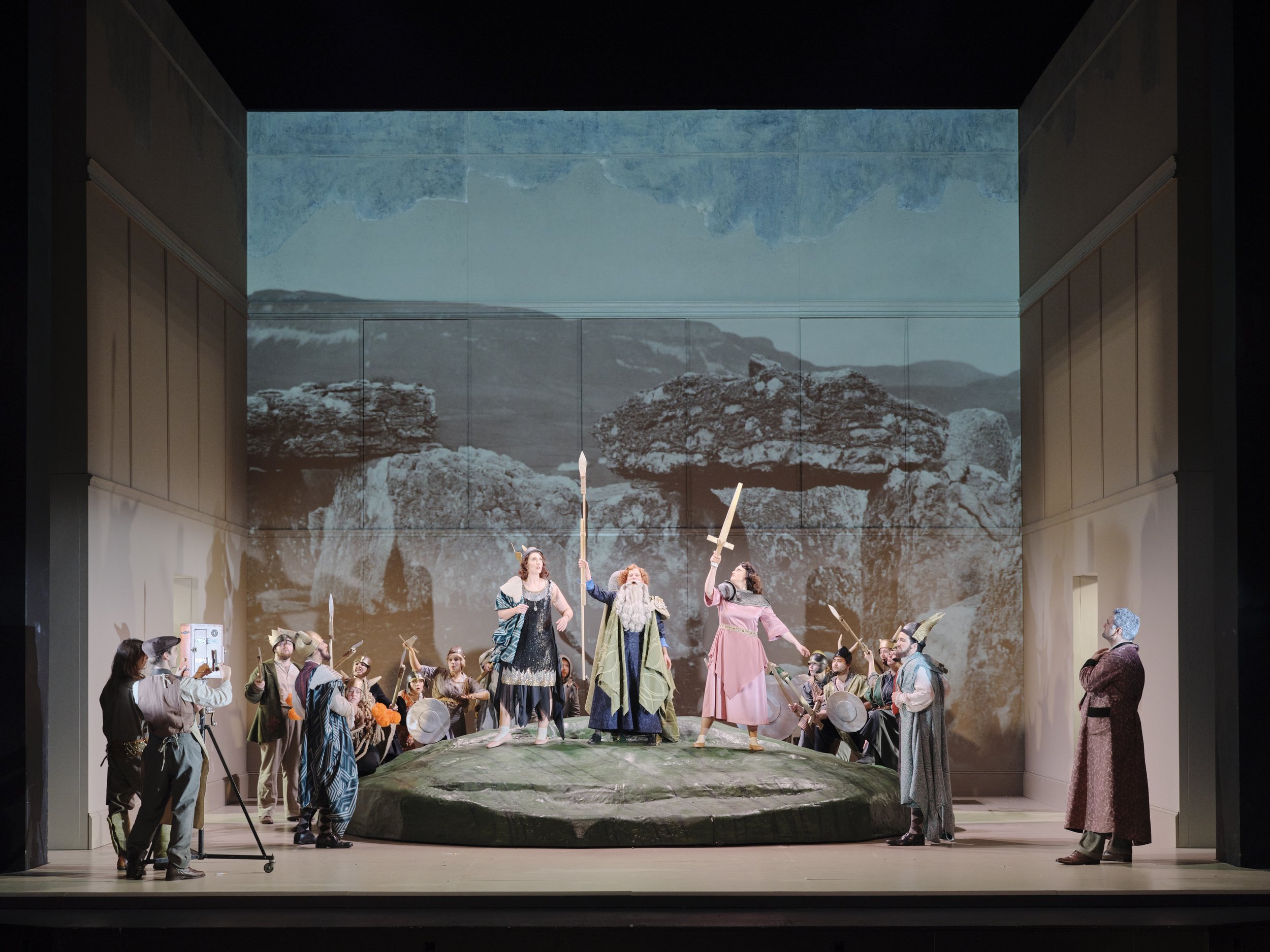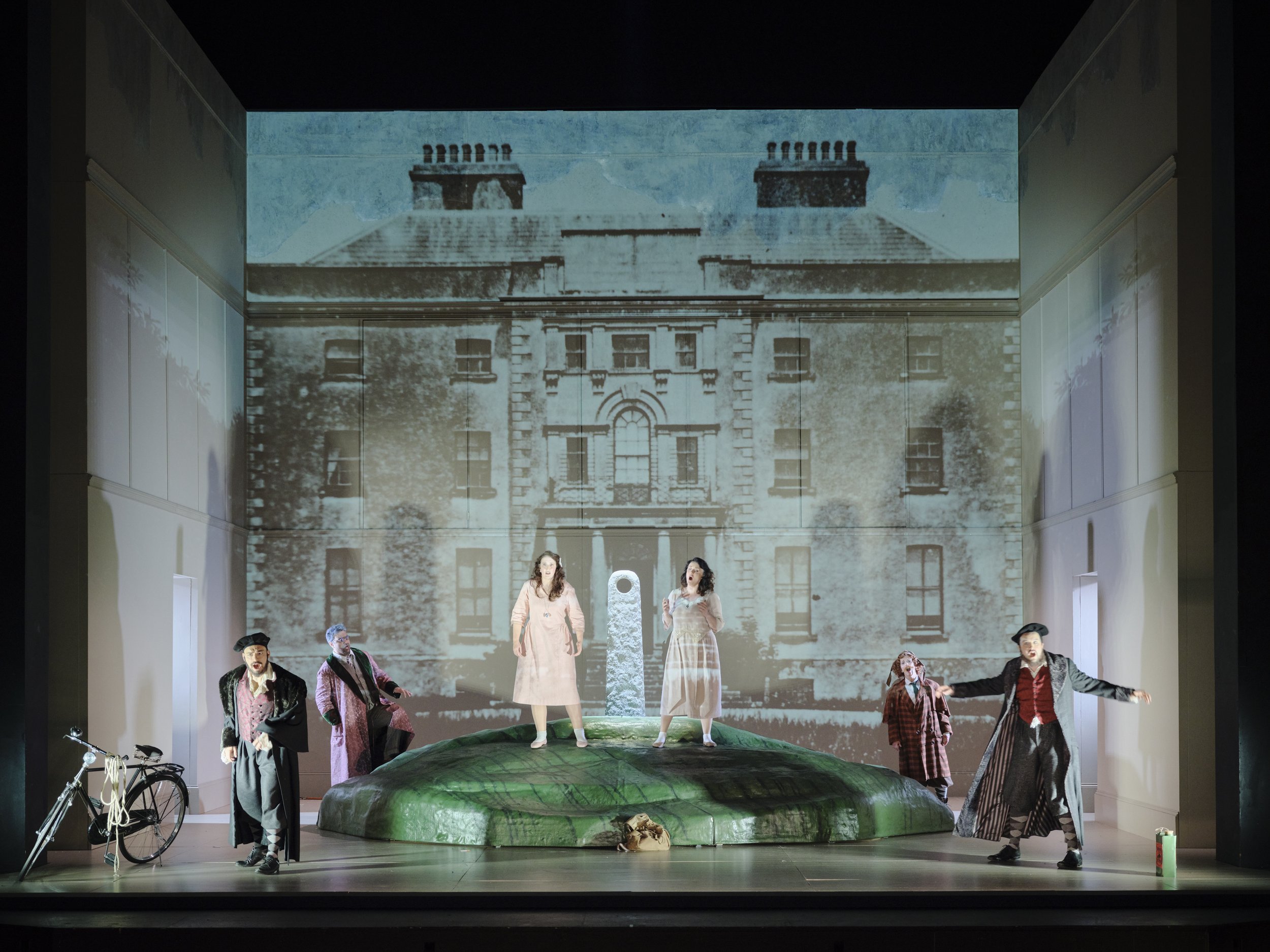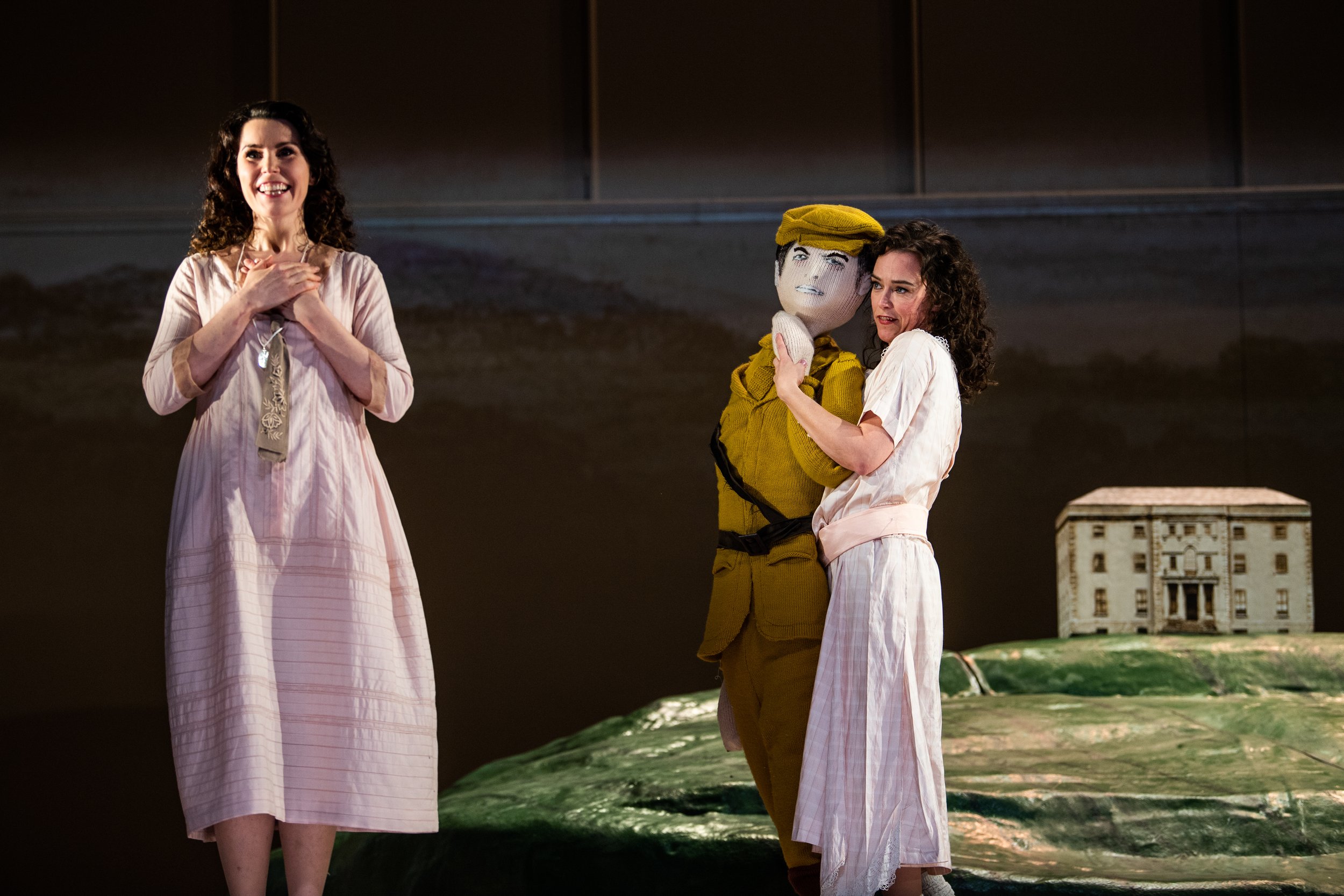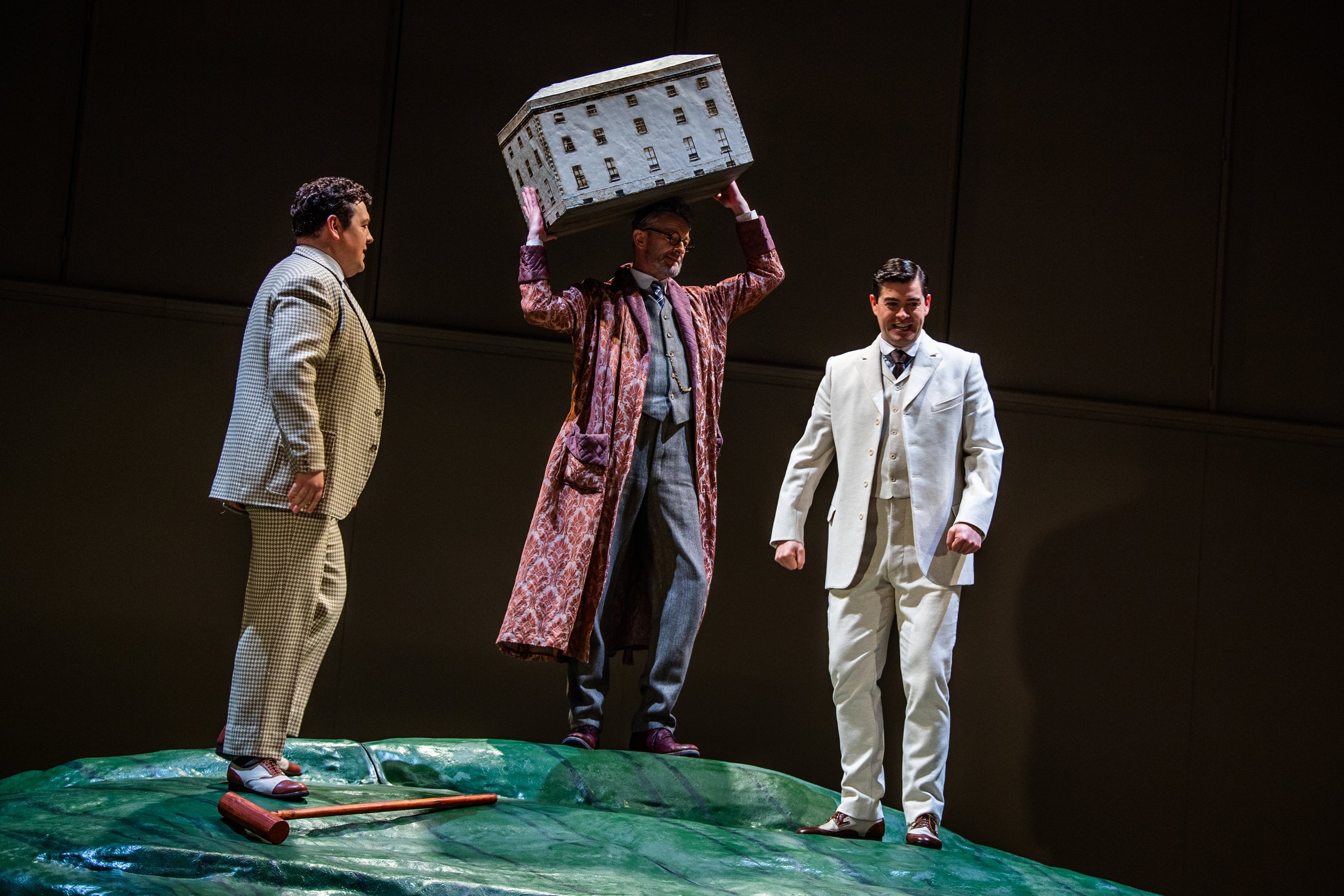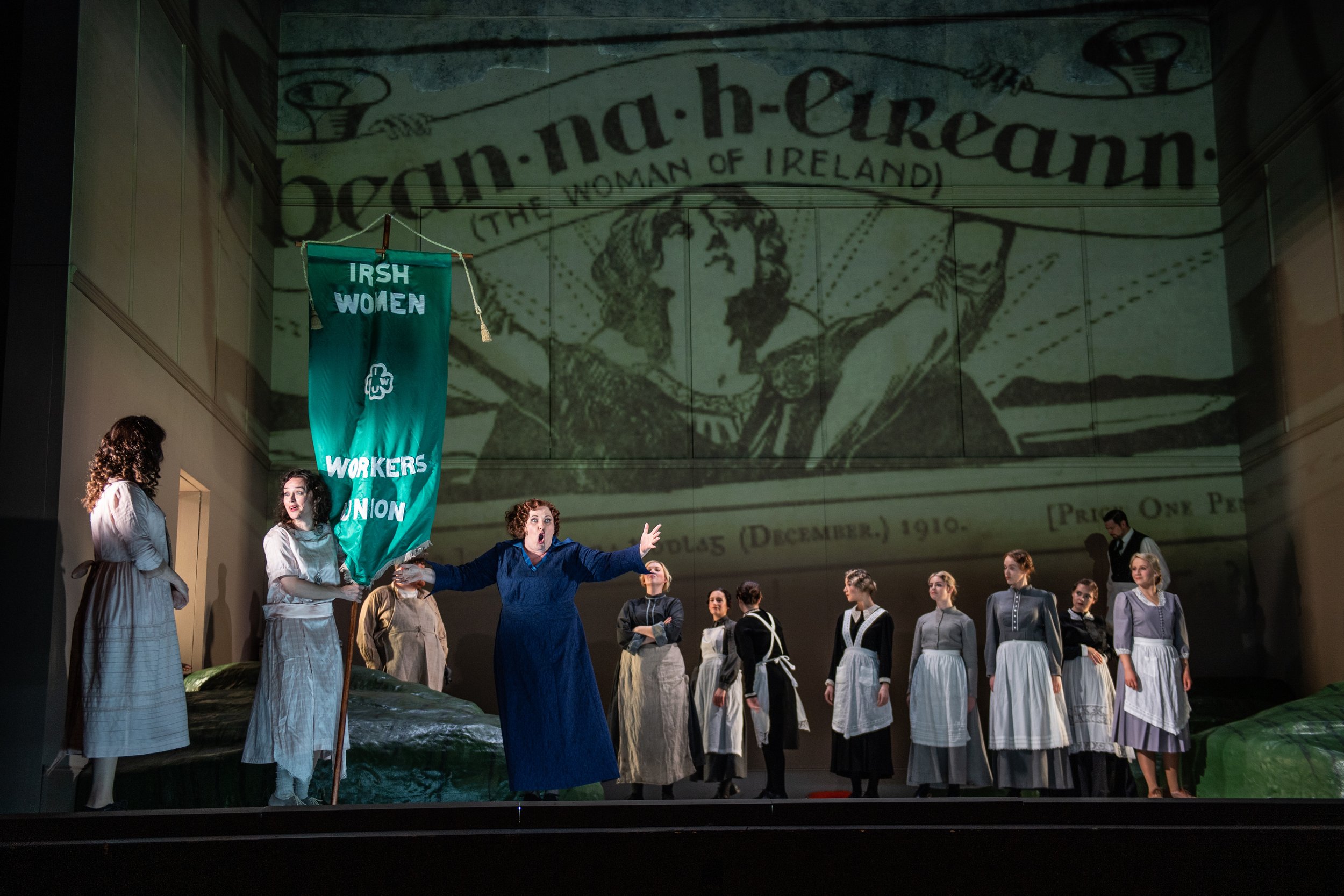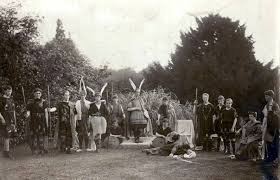
Così fan Tutte
Così fan Tutte by Wolfgang Amadeus Mozart & LORENZO DA PONTE
IRISH NATIONAL OPERA
Conductors: Peter Whelan & Elaine Kelly
Repétiteur & harpsichord: Aoife O’Sullivan
Direction: Polly Graham
Set & Costumes: Jamie Vartan
Lighting: Sinèad Mackenna
Video: Jack Phelan
Associate Director: Davey Kelleher
Assistant Director: Stephanie Dufresne
Cast:
Fiordligi: Anna Devin, Sarah Brady
Dorabella: Sharon Carty, Gemma Nì Bhriain
Despina: Majella Cullagh, Emma Morwood
Ferrando: Dean Power, William Morgan
Guglielmo: Benjamin Russell, Gianluca Margheri
Alfonso: John Molloy, Milan Siljanov
Chorus of Irish National Opera
“A terrible beauty is born”
Così fan tutte is Mozart’s comedy which tells the story of two men who are obsessed with proving the idea that their girlfriends will always be faithful. With their misanthropic friend Don Alfonso, the men make a bet and devise a trick. They pose as soldiers recruited for war, leaving their girlfriends to believe they are alone.
In actual fact the men return immediately, disguised as two other men. In these new guises they attempt to seduce each other’s girlfriends. Initially this proves difficult, but as the day progresses, the girls betray their original lovers with these “new men”. The men abruptly end the trick by staging their return and then feigning discovery of their girlfriends’ illicit new relationships. They use this evidence to chastise and shame their girlfriends before settling down to live the rest of their lives with them.
The title, roughly translated from Italian, means “all women act like this”. It implies a judgment and a position of authority. Perhaps in an effort to not completely alienate fifty percent of his audience at the time of writing, Lorenzo da Ponte did offer a subtitle “La Scuola degli Amanti”.
Critic and writer Alex Ross has written that “no other opera is quite so forthright in its contempt for women.”
In creating this production, created with designers Jamie Vartan, Jack Phelan and Sinéad Mackenna, the intention was to flip the lens and interrogate the agency of the female characters at the centre of the story.
I was interested in the idea that Fiordiligi and Dorabella undergo a process of self-liberation as they begin to take joy in renouncing the values of their past lives, and choose new lovers. This made me wonder what other changes in perspective and values these two women could experience. We located the action in an Anglo-Irish stately pile in the 1910s. We were inspired by this period, and drew on its rich palette to elaborate the story.
This pre-revolutionary Ireland, as Roy Foster describes so eloquently in his book Vivid Faces, posited so many visions of the future as part of the burgeoning debate for nationhood. Feminism, socialism, romanticism, Bolshevism are just some of the ideas which intersected in the zeitgeist of the era.
This situation allowed us to push the comedy of the piece: what if two dimwitted, landed West Britons seriously underestimated their fiancées? What if they stupidly assumed the characters of two far more interesting men - Dion Boucilcault inspired artistes (based on The O’Kalem theatre company, who were making early silent films in Ireland at this time) to test the fidelity of their lovers? What if, in leaving their two girlfriends free to think for themselves, the girls tuned into and absorbed the possibilities of the socio-political movements of the time?
What if these two upper middle class ingenues not only discover a new emotional identity in their new found desire, but also a new-found intellectual and social mojo?
What if, by the end of the opera, these girls become Constance Marcievicz-inspired political radicals?
We used the location of an Anglo-Irish stately pile, such as you find in Elizabeth Bowen’s novels or JG Farrell’s Troubles, as a container for the two cloistered, naive young women.
There was a parallel between the house and the land which it is inhabiting, and their own bodies, which they initially try to lock away from society and turn into fortresses, before going on a journey of discovery.
Like Nora in Ibsen’s A Doll’s House, the values which confine Fiordilogi and Dorabella at the start of the opera fall away as they listen to the forward thinking ideas of Despina, who we have loosely modelled on the radical trade unionist and feminist Louie Bennett. Despina encourages Fiordiligi and Dorabella to reframe their understanding of love.
Once they start rethinking that idea for themselves, the floodgates open, and all inherited assumptions about reality are up for debate, leading the two women to the question which must prompt all revolutions - does reality have to be like this? As Despina advises the women in Act 1, it’s worth examining the truths we assume to be self-evident: "vi par, ma non è ver" (“it seems so but it is not true”).
The new boyfriends (the O'Kalems) are actually fakes, the constancy of a lover is as fragile as the autumn leaves, and the capability and agency of the women at the centre of the story, which is assumed by the men around them to be nil, turns out to be mighty.
Instead of Da Ponte’s tagline, I might suggest another line from the world of revolutionary Ireland:
All changed, changed utterly, A terrible beauty is born

